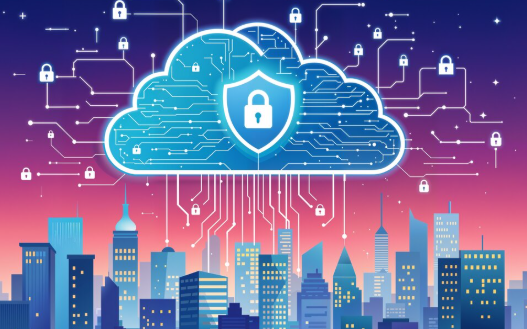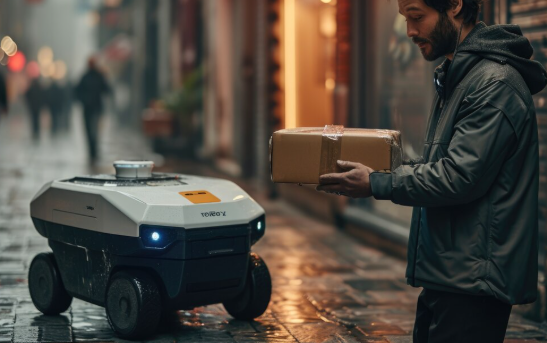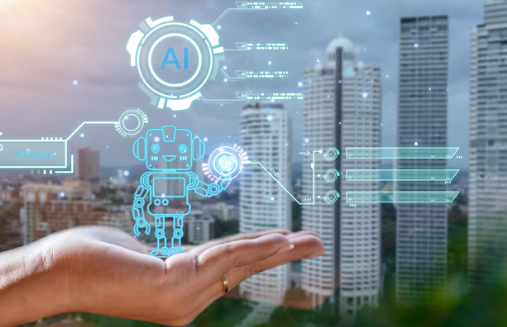In the not-so-distant past, the idea of a refrigerator ordering groceries or a thermostat adjusting itself to your comfort level seemed like a futuristic fantasy. Today, these scenarios are commonplace, thanks to the proliferation of smart devices that are weaving themselves into the fabric of our daily lives. What we thought would be the future of smart devices in daily life is happening in the present. Imagine a world where your home anticipates your needs, where your devices seamlessly connect to enhance your lifestyle, and where technology becomes an invisible hand, subtly orchestrating your daily routine.
From voice-activated assistants to self-driving cars, the Internet of Things (IoT) is ushering in a new era of convenience, efficiency, and personalization, fundamentally altering the way we interact with our homes, our workplaces, and the world around us.
Let’s take a deeper look at how IoT and smart devices are impacting the way we live and breathe.
Understanding IoT: A Nexus of Connectivity
The Internet of Things (IoT) is a network of everyday objects that are equipped with sensors and other technologies to collect and share data. This network connects everything from household appliances to industrial machines, allowing them to communicate with each other and with us, helping humanity usher in a bright future of smart devices in daily life.
According to a recent report by Statista, the number of estimated IoT-connected devices worldwide in 2023 is 15.14 billion, and it is anticipated to reach 29.42 billion by 2030 (Source: Statista). The IoT is changing how we live, work, and interact with the world around us.
Smart Homes: The Convergence of Convenience and Innovation
The Internet of Things (IoT) is transforming homes into intelligent living spaces, offering a plethora of benefits, including convenience, enhanced security, and improved energy efficiency. IoT devices seamlessly integrate into the home environment, enabling homeowners to control and monitor their devices remotely through smartphones, tablets, or voice commands.
- Smart lighting systems utilize IoT technology to automate and optimize lighting usage. Smart bulbs and switches can be programmed to adjust brightness and color temperature based on the time of day, natural light levels, or occupancy sensors.
- Smart thermostats are revolutionizing home climate control. These intelligent devices learn occupant preferences and adjust heating and cooling schedules accordingly, ensuring optimal comfort while minimizing energy waste.
- IoT-enabled appliances bring a level of convenience and automation to everyday tasks. Smart refrigerators can monitor food inventory, track expiration dates, and even suggest recipes based on available ingredients. Smart ovens can be preheated remotely, while smart washing machines can adjust cycles based on soil levels and fabric type.
- Smart security systems provide enhanced protection for homes. As the future of smart devices in daily life swelled, so did the associated threats. Smart cameras and doorbells offer real-time monitoring and smart locks can be controlled remotely, allowing homeowners to grant or revoke access, and smart sensors can detect motion or water leaks, triggering alerts and initiating emergency responses.
- Voice assistants, such as Amazon Alexa and Google Assistant, have become integral components of smart homes. These AI-powered assistants can control a wide range of IoT devices through voice commands, allowing homeowners to adjust lighting, check thermostats, lock doors, and even play music or set alarms without lifting a finger.
The integration of IoT devices and technology into homes is transforming the way we live, offering a future where homes are not just physical structures but intelligent living spaces that anticipate our needs and adapt to our preferences.
IoT in Healthcare: Beyond Monitoring to Proactive Intervention
The healthcare landscape undergoes a seismic shift with the infusion of IoT(Source: TMR). Wearable devices, exemplified by the ubiquitous Fitbit, transcend their fitness-centric origins to become veritable lifesaving instruments. Real-time monitoring capabilities empower these devices to swiftly identify and respond to emergencies, presenting a paradigm shift in healthcare management.
Continuous monitoring not only ensures rapid response during emergencies but also facilitates proactive health management, empowering individuals with data-driven insights into their well-being, similar to what the future of smart devices in daily life was shown in sci-fi movies a few years back.
Wearable devices like the Apple Watch are equipped with health sensors capable of monitoring vital signs such as heart rate and blood oxygen levels. In the event of irregularities, these devices can alert users and even contact emergency services. This real-time health monitoring exemplifies the transformative potential of IoT in healthcare.
Smarter Workplaces: Decoding the Data Onslaught
The influx of data necessitates a paradigm shift in the workforce, demanding an adeptness in deciphering, interpreting, and leveraging information for strategic decision-making.
In manufacturing, IoT is employed for predictive maintenance. Sensors embedded in machinery continuously collect data on performance metrics. Advanced analytics then predict when equipment is likely to fail, enabling proactive maintenance. This not only reduces downtime but also optimizes resource allocation, showcasing the transformative power of data-driven decision-making in industrial settings.
Efficiency in Commuting: A Revolution in Urban Mobility
The daily commute, often a stressful ordeal, is set to transform with the advent of IoT as the next big thing in the future of smart devices in daily life. The seamless connection between smartphones, cars, and city infrastructure will not just shorten travel times but revolutionize traffic management. Imagine a commute where your vehicle seamlessly interacts with traffic signals, creating a harmonious flow of traffic and reducing congestion.
- The vision extends beyond a mere reduction in travel times; it encompasses a holistic reimagination of urban mobility, where vehicles synchronize with traffic lights for optimal routes.
- Cities like Barcelona are leveraging IoT for smart traffic management. Sensors embedded in roads collect real-time data on traffic flow.
- Traffic lights dynamically adjust timings based on the current congestion, minimizing bottlenecks and reducing overall commute times.
Green Manufacturing: IoT as the Vanguard of Sustainability
IoT transcends the realms of convenience, emerging as a vanguard in steering industries towards sustainability. The adoption of “smart grid” technologies within manufacturing heralds an era of energy efficiency. Meters, sensors, and digital tools not only regulate energy flow but seamlessly integrate alternative sources, heralding a greener and ecologically responsible industrial landscape.
In agriculture, IoT sensors provide real-time data on soil moisture levels, nutrient content, and weather conditions. Farmers can use this information to optimize irrigation schedules, select appropriate crops, and minimize the use of fertilizers, contributing to sustainable and environmentally conscious farming practices.
The Future of IoT: A Panorama of Infinite Possibilities
Living in a smarter world fueled by IoT and smart devices is a lifestyle revolution. As we traverse the boundless possibilities of IoT, from personalized experiences to sustainable practices, the future unfolds as a tapestry of innovation, connectivity, and exciting opportunities for those prepared to adapt.
The journey into the future of smart devices in daily life is an invitation to embrace change, welcome innovation, and chart a course into a future that promises to be smarter, more connected, and brimming with opportunities. With STL Digital’s expertise in IoT and other future-centric technologies, enterprises can usher in the new age backed by expert insights for smart and intelligent applications of IoT and related technologies to transform user experiences around the globe.



